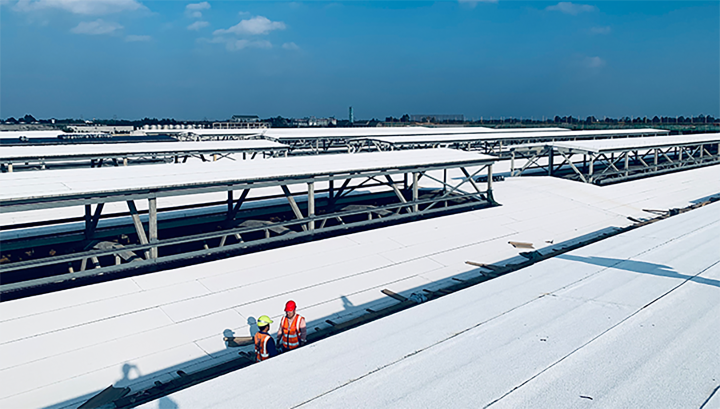
nov . 27, 2024 19:48 Back to list
Repurposing Old Roofing Shingles for Sustainable Home Improvement Projects
The Evolution and Environmental Impact of Old Roofing Shingles
Roofing shingles have long been a staple in residential construction. As building materials have evolved, so too have the types and compositions of shingles used. While new roofing options provide various benefits, old roofing shingles—particularly asphalt and wood varieties—remain prevalent in many homes. Understanding the life cycle, energy efficiency, and environmental impact of these materials is essential for homeowners considering renovations or restorations.
The Life Cycle of Roofing Shingles
Roofing shingles have a defined life cycle that begins with their production. Traditionally, asphalt shingles, made from a fiberglass mat coated with asphalt and topped with granules, are the most commonly used in North America. Their affordability and ease of installation make them a popular choice for many homeowners. However, the lifespan of conventional asphalt shingles typically ranges from 15 to 30 years, depending on the quality and environmental conditions.
As shingles age, they begin to show signs of deterioration, including curling, cracking, and discoloration. When these shingles reach the end of their life, homeowners face important decisions regarding disposal and replacement. Many people opt to completely remove old shingles, which contributes to significant waste in landfills. It is estimated that over 11 million tons of asphalt shingles are disposed of in landfills each year in the United States alone. This statistic highlights the pressing need for sustainable practices in the building industry.
Recycling Old Shingles
As the environmental implications of waste become more concerning, various recycling programs have emerged for old roofing shingles. Many of the materials used in asphalt shingles can be recycled and repurposed. For instance, asphalt can be extracted and reused in road construction, while fiberglass can be processed into new shingles or other products. Some regions and municipalities have initiated programs to encourage the recycling of shingles, recognizing the benefits both for the environment and for reducing costs associated with landfill disposal.
The recycling process involves tearing off the roof, sorting the shingles, and separating the asphalt from the other materials. While the technology and infrastructure for shingle recycling are still developing, it has gained traction in certain areas, driven by a growing awareness of sustainability.
Choosing Sustainable Alternatives
old roofing shingles

Homeowners looking to replace old roofing shingles have numerous options. Metal roofing, for example, has gained popularity due to its longevity and energy efficiency. Metal roofs can last 40 years or more, resisting harsh weather conditions and requiring minimal maintenance. Additionally, many metal roofing products are made from recycled materials and are recyclable at the end of their lifespan, making them a more sustainable choice.
Another viable option is slate or tile roofing, both of which are durable and available in a wide range of designs. Although the initial investment in slate or tile roofing can be higher, their longevity often offsets the costs over time. Moreover, these materials are naturally sourced and can significantly enhance the aesthetic appeal of a home while also providing energy-efficient benefits.
Energy Efficiency and Old Shingles
Energy efficiency is an essential consideration when dealing with old roofing shingles. Many traditional asphalt shingles can absorb a significant amount of heat, leading to increased energy costs for cooling homes in warmer climates. This phenomenon, known as the urban heat island effect, can exacerbate local temperatures, especially in densely populated areas.
To mitigate this issue, homeowners can apply reflective coatings to old shingles or choose lighter-colored shingles for new installations. These practices can help lower heat absorption, contributing to overall energy savings and a more comfortable indoor environment.
Conclusion
In summary, the journey of roofing shingles, particularly older types, is intricate and filled with both challenges and opportunities. As the demand for sustainable construction practices grows, so too does the potential for recycling and repurposing old shingles. Homeowners faced with the decision to replace or repair their roofs are encouraged to consider the environmental implications of their choices.
Promoting recycling initiatives, opting for sustainable materials, and improving energy efficiency can have lasting positive impacts on our environment. By acknowledging the value of old roofing shingles, we can pave the way for a more sustainable future, ensuring that even the materials of the past can contribute to building a greener tomorrow.
-
Small Clay Roof Tiles for Durable & Stylish Roofing Red & Custom Options Available
NewsJun.24,2025
-
Lifetime Roof Shingles – Durable Roofing Solutions for Decades
NewsJun.10,2025
-
Top Roofing Shingles Types Compare Different Types of Architectural Roofing Shingles for Your Home
NewsJun.10,2025
-
Affordable Asphalt Shingle Roll Durable & Easy Flat Roof Solution
NewsJun.09,2025
-
Metal Asphalt Look Roofing Durable Shingle-Style Options
NewsJun.09,2025
-
Premium Clay Valley Roof Tiles Durable & Eco-Friendly
NewsJun.09,2025







